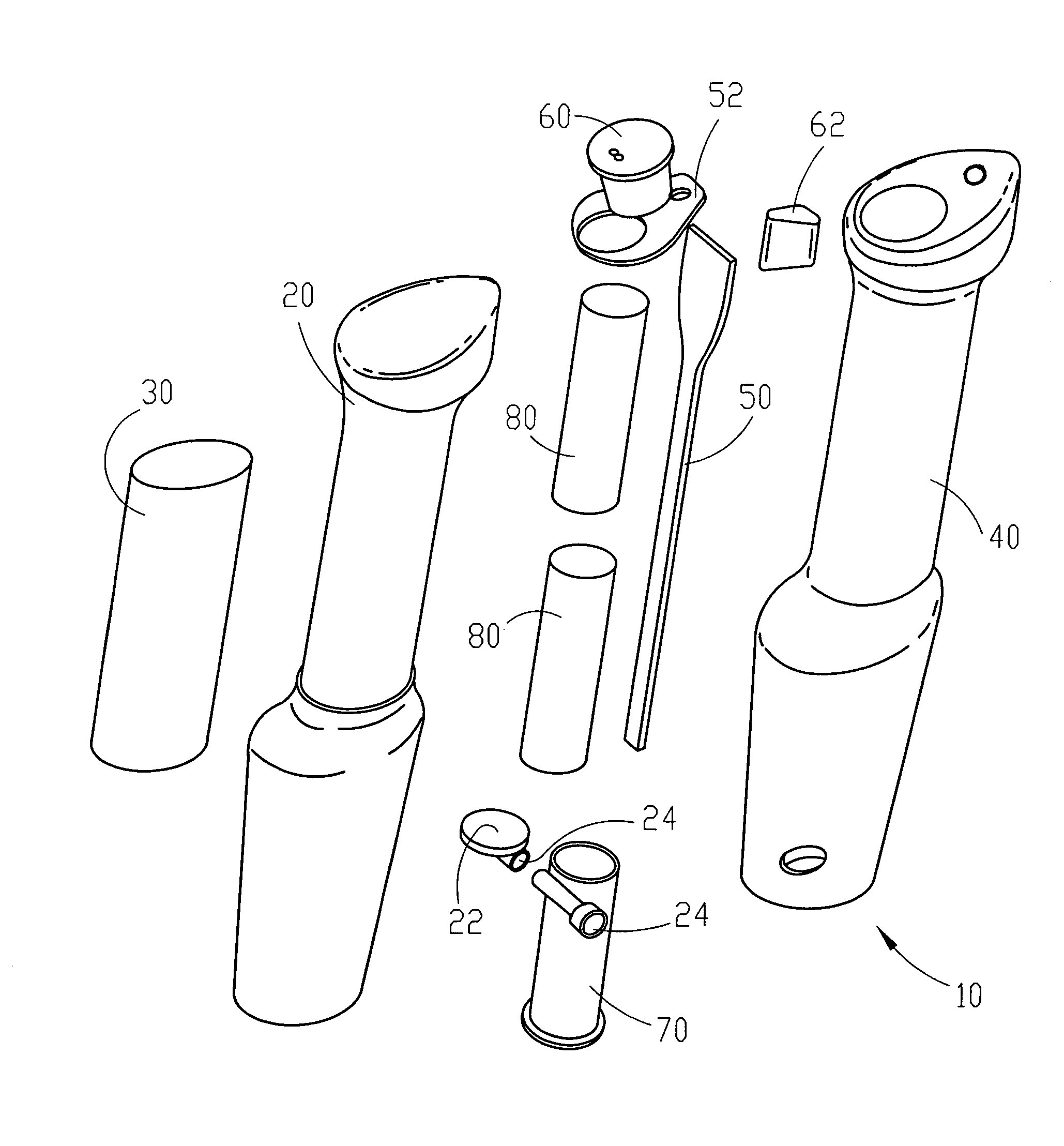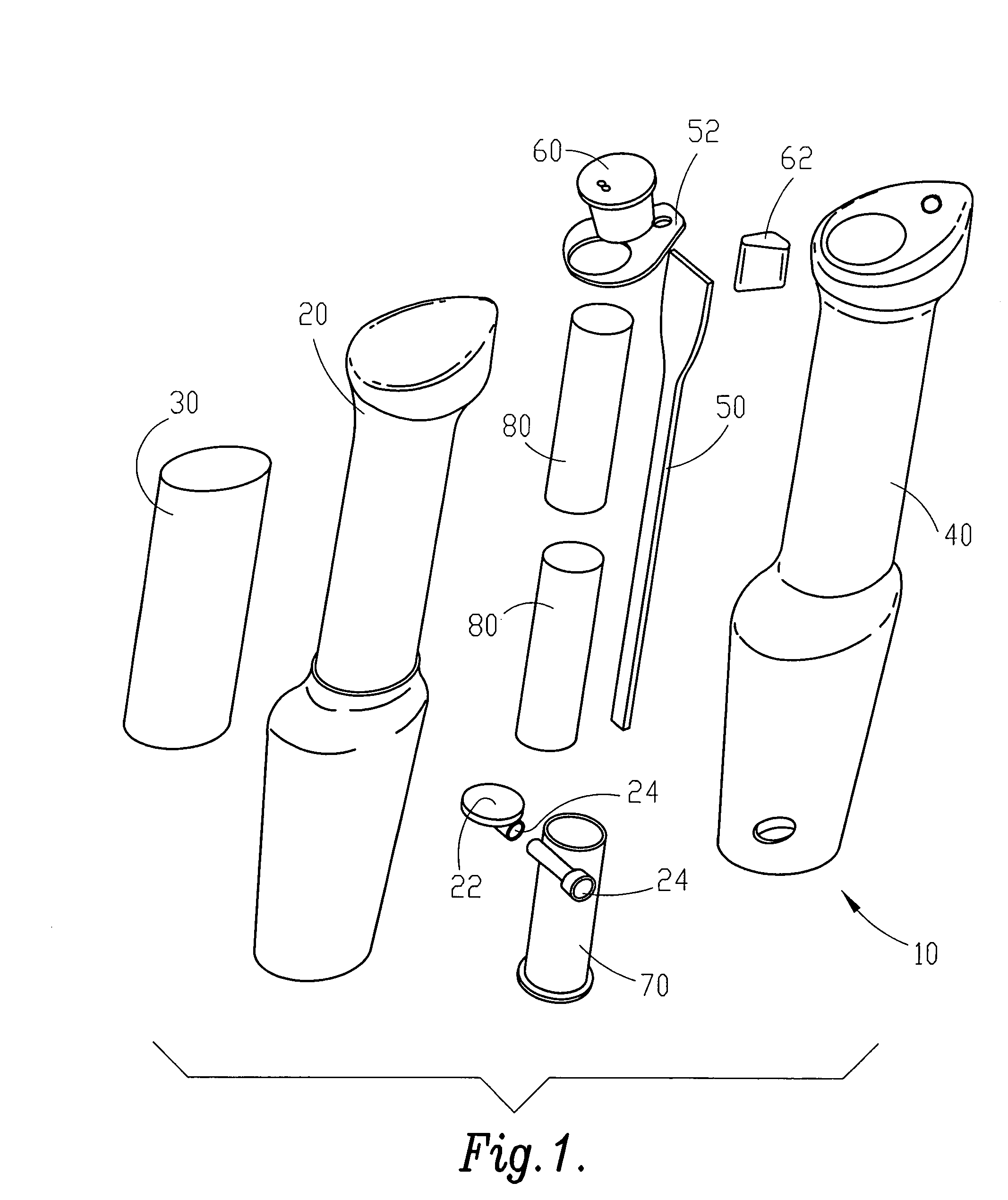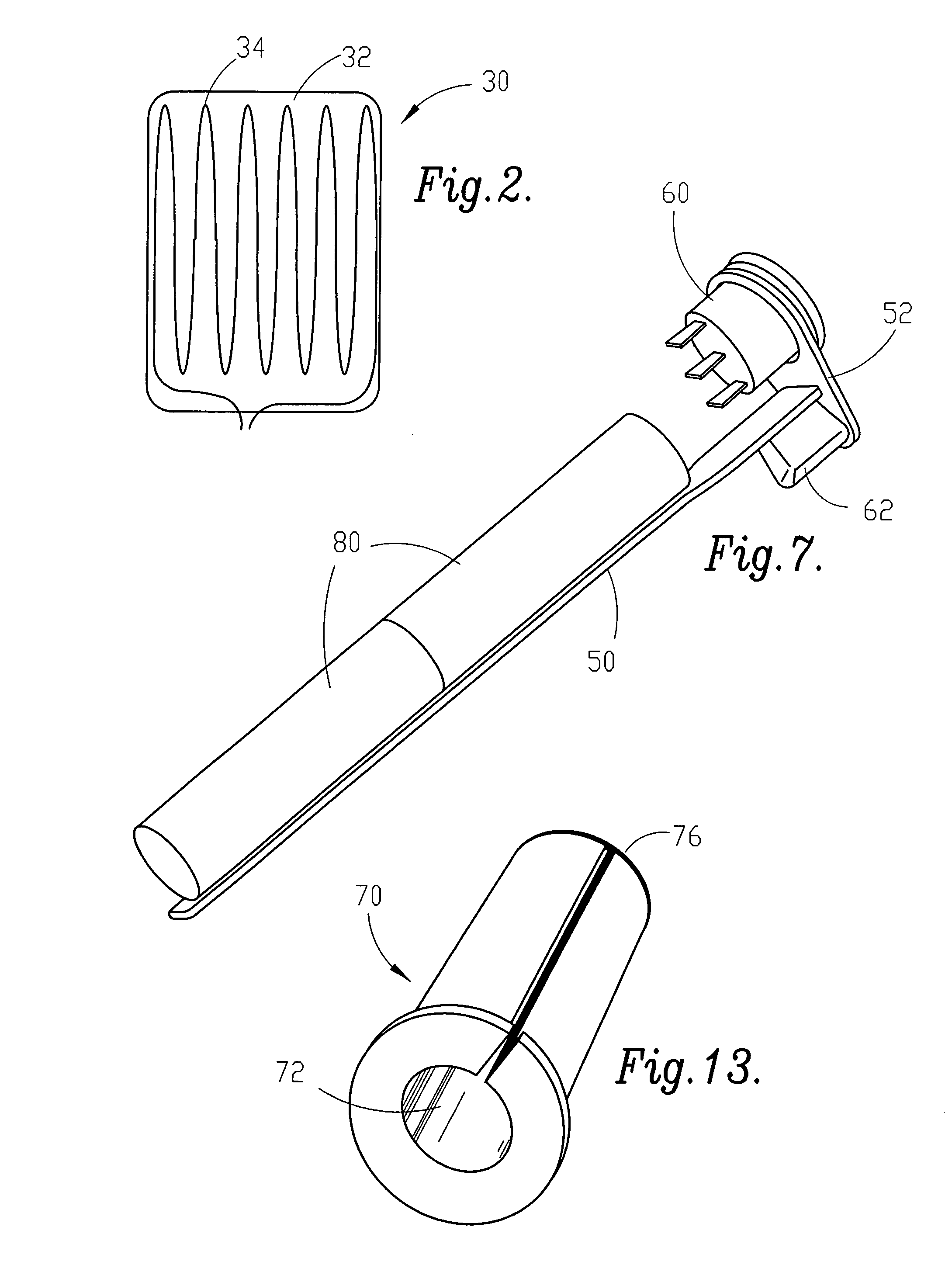Heated hand grip
a hand grip and hand technology, applied in the field of heated hand grips, can solve the problems of inability to disclose a method for easily attaching a single hand grip to ski poles of varying sizes, the rod may inadvertently fall apart during use, and the difficulty of assembly or disassembly, so as to achieve the effect of convenient manufacture and easy installation
- Summary
- Abstract
- Description
- Claims
- Application Information
AI Technical Summary
Benefits of technology
Problems solved by technology
Method used
Image
Examples
Embodiment Construction
[0030]As required, detailed embodiments of the present invention are disclosed herein; however, it is to be understood that the disclosed embodiments are merely exemplary of the principles of the invention, which may be embodied in various forms. Therefore, specific structural and functional details disclosed herein are not to be interpreted as limiting, but merely as a basis for the claims and as a representative basis for teaching one skilled in the art to variously employ the present invention in virtually any appropriately detailed structure.
[0031]Referring to FIGS. 1 through 8, a preferred embodiment of a heated hand grip of the instant invention for use on a ski pole is shown and described. FIG. 1 shows an exploded view of hand grip 10 which includes central core 20, set-screw assembly 24, battery core pad 22, heating element 30, outer housing 40, printed circuit boards 50 and 52, push button control switch 60, DC charger jack 62, bushing 70, and two (2) batteries 80. In the e...
PUM
 Login to View More
Login to View More Abstract
Description
Claims
Application Information
 Login to View More
Login to View More - R&D
- Intellectual Property
- Life Sciences
- Materials
- Tech Scout
- Unparalleled Data Quality
- Higher Quality Content
- 60% Fewer Hallucinations
Browse by: Latest US Patents, China's latest patents, Technical Efficacy Thesaurus, Application Domain, Technology Topic, Popular Technical Reports.
© 2025 PatSnap. All rights reserved.Legal|Privacy policy|Modern Slavery Act Transparency Statement|Sitemap|About US| Contact US: help@patsnap.com



